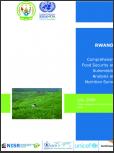Health Administrative indicators 2017
The National Institute of Statistic of Rwanda (NISR) together with NIDA and key stakeholders as Ministry of Health (MoH), Ministry of Local Government (MINALOC) and Ministry of Justice (MINIJUST) in its program of strengthening civil registration and vital statistics in Rwanda, has developed a Civil Registration and Vital Statistics Systems (CRVS), a web based application system for recording vital events in order to boost quality and coverage in data capture and management of vital statistics. Therefore, this is the Progr
Demographic and Health Survey 2014/2015 - Final report
The main objective of the 2014-15 RDHS was to obtain current information on demographic and health indicators, including family planning; maternal mortality; infant and child mortality; nutrition status of mothers and children; prenatal care, delivery, and postnatal care; childhood diseases; and pediatric immunization.
Comprehensive Food Security and Vulnerability Analysis (CFSVA) Report - 2015
The objective of this Comprehensive Food Security and Vulnerability Analysis 2015 (CFSVA 2015) is to measure the extent and depth of food and nutrition insecurity in Rwanda, analyze trends over time and integrate the findings with those from the recent ‘Third Integrated Household Living Conditions Survey’ (EICV 4) and ‘Rwanda Demographic Health Survey 2014’ (DHS 2014). The key questions of the report are:
Demographic and Health Survey [DHS] 2014/2015 Key findings
Comprehensive Food Security and Vulnerability Analysis and Nutrition Survey (CFSVA) 2012 -- Summary
Comprehensive Food Security and Vulnerability Analysis (CFSVA) - 2012
Demographic and Health Survey, 2010 - HIV Fact Sheet
Demographic and Health Survey 2010 (Fact Sheet)
The 2010 Rwanda Demographic and Health Survey (RDHS) provides up-to-date information on the population and health situation in Rwanda. The 2010 RDHS is the fifth national Demographic and Health Survey conducted in the country. Repeated surveys allow for an analysis of trends over time.The survey is based on a nationally representative sample. It provides estimates at the national and provincial levels.
Demographic and Health Survey 2010 - Final Report
For accessing data for DHS 2010, please click here
Comprehensive Food Security and Vulnerability Analysis (CFSVA) - 2009
Understanding food and nutrition security and vulnerability has always been challenging. Yet the emergence of relatively new phenomena such as recent high food and fuel prices, the global financial crisis, and climate change, all highlight the need to better understand the lives and livelihoods of vulnerable population so that effective policies and actions can be implemented to save lives and address the root causes of food and nutrition insecurity.

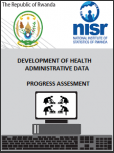
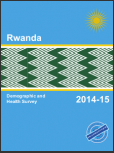
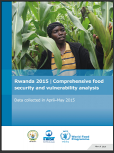
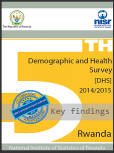
![[title]](https://beta.statistics.gov.rw/sites/default/files/styles/pub_small_112x150_/public/publications/70a13228-3cc6-4e13-8f4a-9b17c23523d4/cover_CFSVA_2012.jpg?itok=MmeydVNr)
![[title]](https://beta.statistics.gov.rw/sites/default/files/styles/pub_small_112x150_/public/publications/0d4a2e99-bff2-41de-ad99-a759bfb1e26e/CFSVA_2012.jpg?itok=1tiw1LuM)
![[title]](https://beta.statistics.gov.rw/sites/default/files/styles/pub_small_112x150_/public/publications/12d65990-a69f-4c79-b559-d7f77a7ff973/HIV_coverfast%20facts%20copy.jpg?itok=MRBnzqci)
![[title]](https://beta.statistics.gov.rw/sites/default/files/styles/pub_small_112x150_/public/publications/319c6a68-aae6-4a30-a8f0-b25f34158347/cpi_coverfast%20facts.jpg?itok=3tVaiZTH)
![[title]](https://beta.statistics.gov.rw/sites/default/files/styles/pub_small_112x150_/public/publications/04eaebdc-3f22-4666-9f20-26d0d8c2c80d/cover_dhs_2010_final.jpg?itok=0FBiYsrf)
